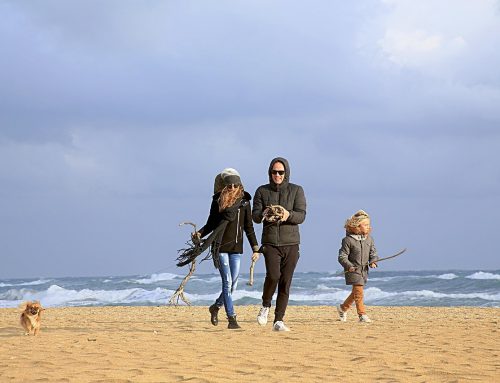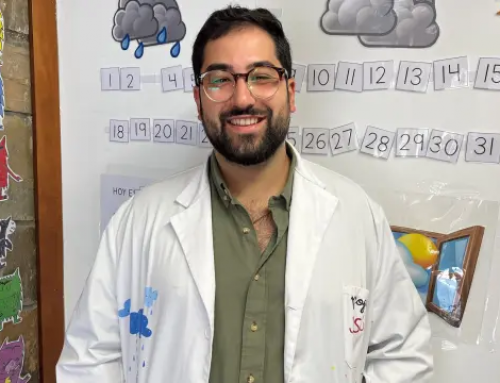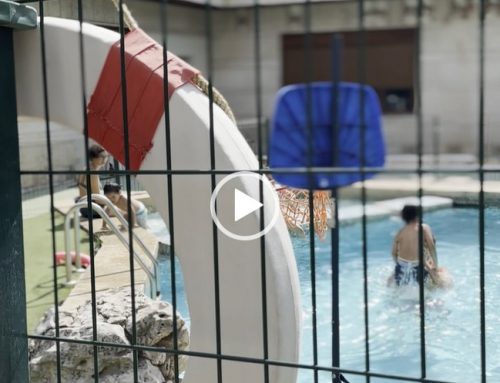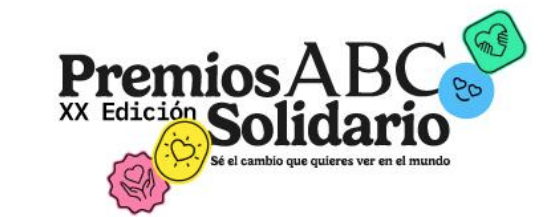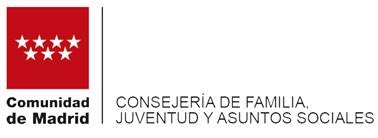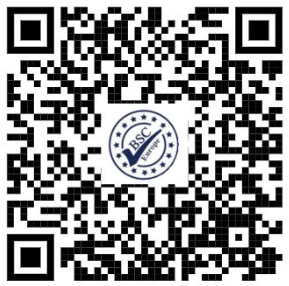“El bilingüismo es, cada vez más a menudo, una necesidad, no una opción”–Annick DeHouwer, 1999
Actualmente los niños viven en un entorno global que les exige hablar y entender dos o más idiomas. Esto es cierto ya sea que un niño tenga o no un trastorno en el lenguaje o a nivel cognitivo. La necesidad de ser bilingüe atraviesa estos límites.

La mayoría de las investigaciones sobre bilingüismo están basadas en niños que carecen de alteraciones. Sin embargo, las últimas investigaciones sobre bilingüismo han comenzado a centrarse en aquellas personas con trastornos en el lenguaje y/o cognitivos – con mayor énfasis en las dificultades del lenguaje – : es decir, en aquellos niños con lo que suele denominarse Trastorno específico del lenguaje (TEL) (aunque también hay investigaciones en población con Síndrome de Down). Otras alteraciones como TEA o síndrome de Williams han sido ampliamente ignoradas.
Por lo tanto, cuando buscamos comprender el bilingüismo en niños con discapacidad, a menudo debemos referirnos a cuerpos de literatura relacionados, pero no específicos.
Aquellos niños bilingües simultáneos (es decir, expuestos a dos lenguas al mismo tiempo) con una frecuencia de exposición adecuada adquirirán dos idiomas aproximadamente en el mismo período de tiempo en que los niños monolingües adquieren un solo idioma (De Houwer, 2009; Genesee, 2006; Genesee, Paradis y Crago, 2004). Los principales hitos, como la aparición de las primeras palabras, sucederán al mismo tiempo. Sin embargo, el desarrollo bilingüe no progresa como lo hace el desarrollo monolingüe. Los niños bilingües simultáneos suelen tener un vocabulario más reducido que los niños monolingües de la misma edad. Pero, si combinamos las palabras que conocen en ambos idiomas, si podríamos equiparar el nivel de vocabulario de monolingües y bilingües. (Pearson, 1998; Pearson, Fernandez & Oller, 1993; Pearson, et al., 1997).
Este perfil de aprendizaje tiene implicaciones para los niños con trastornos del lenguaje. Primero, estos niños tendrán dificultades a la hora de adquirir una lengua, ya sea una o dos. En segundo lugar, los niños bilingües con trastornos del lenguaje mostrarán dificultades en ambos idiomas, pero los tipos de problemas que experimenten dependerán de las estructuras específicas que necesitan aprender en cada idioma. Tercero, dependiendo de la frecuencia con la que se escuche y use cada idioma, los niños tienen un idioma dominante. Finalmente, los niños con trastorno del lenguaje que son bilingües se desarrollarán de manera diferente a los niños con trastorno del lenguaje y monolingües, ya que estos últimos siguen la progresión natural del desarrollo del lenguaje.
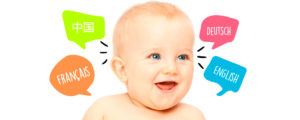
Otra diferencia entre los niños bilingües y monolingües es que los niños bilingües experimentan la transferencia de idioma, donde los aspectos de un idioma afectan su comprensión o el uso del otro idioma. La transferencia de idioma puede tener un impacto positivo en el aprendizaje de idiomas, como cuando un niño utiliza su conocimiento de una palabra francesa (por ejemplo, «mal») para aprender una palabra en inglés (por ejemplo, «malevolent»). También puede provocar errores en la producción infantil, como cuando un niño usa una estructura sintáctica del inglés al hablar castellano (por ejemplo, «el rojo coche»). Esperamos que ocurran estas transferencias idiomáticas también en niños con trastornos del lenguaje expuestos a mas de una lengua.
Los bilingües secuenciales, es decir aquellos que aprenden primero un idioma y luego el otro, tienen diferentes perfiles de desarrollo que los bilingües simultáneos. Primero, no siempre se vuelven fluidos en su segundo idioma (L2). Los factores que influyen en la fluidez de L2 incluyen qué tan jóvenes son cuando están expuestos, con qué frecuencia están expuestos, qué tan rico es el entorno lingüístico, los niveles educativos de los padres, la disposición a usar el idioma y, para los niños mayores que han elegido aprender un segundo idioma, Cuán motivados están para aprender (Paradis, 2007b). En segundo lugar, su lengua materna (L1) puede convertirse en su lengua más débil con el tiempo, especialmente en contextos donde no se usa con frecuencia y es una lengua minoritaria. La implicación para todos los niños, incluidos aquellos con trastornos del lenguaje, es que el idioma del hogar debe ser compatible para mantener L1.
Los niños con trastornos en el lenguaje se mueven en un rango de dificultad, de leve a grave. Su nivel de discapacidad conduce a dificultades generales de aprendizaje, así como a problemas específicos para el aprendizaje de idiomas; así, todos los aspectos del lenguaje se retrasan en relación con su edad. A pesar de la considerable variabilidad individual, la investigación muestra que los niños monolingües con trastornos cognitivos y del lenguaje tienen un perfil identificable respecto de las fortalezas y debilidades (Chapman & Kay-Raining Bird; Chapman & Hesketh, 2000). Primero, su comprensión del lenguaje suele ser mejor que su capacidad para hablarlo. Esto significa que puede ser difícil juzgar lo que un niño sabe sobre el lenguaje por lo que dice. Segundo, la gramática es más difícil de aprender que el vocabulario.
Entonces, ¿Cómo les va a los niños con trastorno del lenguaje y/o cognitivo a la hora de aprender dos idiomas?
Primero, pueden volverse funcionalmente bilingües (Woll & Grove, 1996) e incluso trilingües (Vallar & Papagno, 1993).
En segundo lugar, como cabría esperar, los niños bilingües simultáneos con dificultades muestran el mismo perfil de fortalezas y debilidades en ambos idiomas que se encuentran en niños monolingües en su idioma único (Feltmate & Kay-Raining Bird, 2008; Kay-Raining Bird, Cleave, Trudeau, Thordardottir, Sutton, y Thorpe, 2005).
En tercer lugar, las habilidades lingüísticas dominantes de los bilingües simultáneos con algún trastorno cognitivo son equivalentes a las habilidades lingüísticas únicas de los niños monolingües con algún trastorno cognitivo de la misma edad mental (Kay-Raining Bird et al., 2005), por lo que ser bilingüe no los perjudica.
Y, finalmente, los bilingües simultáneos con trastorno cognitivo están aprendiendo a hablar dos idiomas, aunque su lenguaje no dominante puede variar considerablemente y está relacionado con factores como la frecuencia de entrada.
Se debe realizar más investigación para ayudarnos a comprender el curso del desarrollo del bilingüismo en niños con trastornos del lenguaje y/o cognitivos y los factores que influyen en ese desarrollo. Por ejemplo, los niños con trastornos del lenguaje y/o cognitivos deben estudiarse en una variedad más amplia de ubicaciones geográficas y entornos educativos para que podamos comprender mejor los resultados en toda la gama de experiencias bilingües que existen. Es importante destacar que el bilingüismo secuencial en niños con discapacidad debe recibir más atención. Además, se debe estudiar un conjunto más amplio de medidas de lenguaje.
A pesar de la escasez de información, se pueden hacer varias conclusiones y recomendaciones basadas en los estudios disponibles:
Las familias deben liderar la toma de decisiones sobre si sus hijos necesitan dos idiomas o no.
Si un niño con un trastorno del lenguaje y/o trastorno cognitivo necesita saber más de una lengua, entonces el enfoque debe estar en ayudarles a aprender ambas.
Es importante proporcionar información de alta calidad a los niños en cada idioma.
Para los niños con dificultades del lenguaje y/o cognitivas, los logopedas y otros profesionales implicados en su rehabilitación deberían ayudar a las familias a identificar estrategias exitosas para facilitar el acceso a las lenguas.
Si un niño tiene un trastorno del lenguaje y/o cognitivo, todos los idiomas que aprenda se verán afectados.
El bilingüismo no cambia el perfil general de las fortalezas y debilidades del lenguaje, características de los niños con trastornos del lenguaje y/o cognitivos. Si son bilingües, sin embargo, este perfil se manifestará en ambos idiomas.
Las características particulares del lenguaje con las que tienen dificultades los niños con trastornos del lenguaje y/o cognitivos dependerán de las características del idioma o los idiomas que están aprendiendo.
References
Chapman, R., & Hesketh, L. (2000). Behavioral phenotype of individuals with Down syndrome. Mental Retardation and Developmental Disability Research Reviews, 6, 84-95.
Chapman, R. S., & Kay-Raining Bird, E. (in press). Language development in childhood, adolescence, and young adulthood in persons with Down syndrome. To appear in J. Burack, R. Hodapp, & E. Zigler (Eds.), Handbook of Intellectual Disabilities and Development (2nd edition), Oxford, UK: Oxford University Press.
De Houwer, A. (2009). An introduction to bilingual development. Toronto: Multilingual Matters.
Feltmate, K., & Kay-Raining Bird, E. (2008). Language Learning in Four Bilingual Children with Down Syndrome: A Detailed Analysis of Vocabulary and Morphosyntax. Canadian Journal of Speech-Language Pathology and Audiology, 32, 6 – 20.
Genesee, F. (2006). Bilingual first language acquisition in perspective. In L. Wei (Series Ed.) & P. McCardle and E. Hoff (Vol. Eds.), Child language and child development, Vol. 7. Childhood bilingualism: Research on infancy through school age (pp. 45 – 67). Toronto: Multilingual Matters.
Genesee, F., Paradis, J., & Crago, M. (2004). Dual language development and disorders. A handbook on bilingualism and second language learning. Baltimore, MD: Paul H. Brookes.
Kay-Raining Bird, E., Cleave, P. L., Trudeau, N., Thordardottir, E., Sutton, A., & Thorpe, A. (2005). The language abilities of bilingual children with Down syndrome. American Journal of Speech-language Pathology, 14, 187 – 199.
Paradis, J. (2007b). Second language acquisition in childhood (pp. 387 – 406). In E. Hoff & M. Shatz (Eds.), Blackwell Handbook of Language Development. Malden, MA: Blackwell Publishing.
Pearson, B. Z. (1998). Assessing lexical development in bilingual babies and toddlers. International Journal of Bilingualism, 2, 347 – 372.
Pearson, B., Fernandez, S., Lewedag, V., & Oller, D. K. (1997). Input factors in lexical learning of bilingual infants (ages 10 – 30 months). Applied Psycholinguistics, 18, 41 – 58.
Pearson, B., Fernandez, S., & Oller, K. (1993). Lexical development in bilingual infants and toddlers: Comparison to monlingual norms. Language Learning, 43, 93 – 120.
Vallar, G., & Papagna, C. (1993). Preserved vocabulary acquisition in Down’s syndrome: The role of phonological short-term memory. Cortex, 29, 467 – 483.
Woll, B., & Grove, N. (1996). On language deficits and modality in children with Down syndrome: A case study of twins bilingual in BSL and English. Journal of Deaf Studies and Deaf Education, 1, 271 – 278.
Bilingualism and Children with Cognitive Disabilities
Alexandra Vera
“Bilingualism is most often a necessity, not a choice”–Annick DeHouwer, 1999
These days children live in a global environment that requires them to speak and understand two or more languages. This is true whether or not a child has a language or cognitive impairment. The need to be bilingual cuts across disability boundaries.
A majority of developmental research on bilingualism involves children lacking special needs. Recent bilingual research has begun to focus on individuals with language and/or cognitive disorders with an emphasis on language difficulties but not cognitive–children who are often referred to as Specifically Language Impaired (SLI), or children with Down syndrome. Additionally, populations such as autism or Williams syndrome have been largely ignored. Thus, when we search to understand bilingualism in children with disabilities, we must often refer to related bodies of literature.
Simultaneous bilinguals with adequate exposure frequency will acquire two languages in approximately the same time frame that monolingual children acquire one language (e.g., De Houwer, 2009; Genesee, 2006; Genesee, Paradis & Crago, 2004). Major milestones such as the occurence of first words will happen at the same time. However, bilingual development does not progress as monolingual development does. Young simultaneous bilingual children will have smaller vocabularies than monolingual children of the same age when you look at each of their languages separately. But, when you combine the words they know in both languages, bilingual children will have vocabularies that are often similar in size or sometimes even larger than monolingual children’s (Pearson, 1998; Pearson, Fernandez & Oller, 1993; Pearson, et al., 1997).
This learning profile has implications for children with language and cognitive disorders. First, these children will have language learning problems whether they learn one or two languages. Second, bilingual children with language learning disorders will exhibit problems in both their languages, but the types of problems they experience will depend upon the specific structures they need to learn of each language. Third, depending upon how frequently each language is heard and used, children may have a dominant language that they speak better than the other. Finally, children who are bilingual with language and cognitive disorders will develop somewhat differently from children who are monolingual with language and cognitive disorders, which is a natural progression of language development.
Another difference between bilingual and monolingual children is that bilingual children experience language transfer, where aspects of one language impact their understanding or use of the other language. Language transfer can have a positive impact on language learning, as when a child uses their knowledge of a French word (e.g., “mal”) to learn an English word (e.g., “malevolent”). It can also lead to errors in bilingual children’s production, as when a child uses a syntactic structure from French when speaking English (e.g., “Me, I am going.”). We would expect language transfer to occur in children with language and cognitive impairments as well as typically developing children.
Sequential bilinguals have different developmental profiles than simultaneous bilinguals. First, they do not always become fluent in their second language (L2). Factors that influence L2 fluency include how young they are when exposed, how frequently they are exposed, how rich the language environment is, parent’s educational levels, willingness to use the language, and, for older children who have chosen to learn a second language, how motivated they are to learn (Paradis, 2007b). Second, their home language (L1) can become their weaker language over time, especially in contexts where it is not used frequently and is a minority language. The implication for all children, including those with language or cognitive disorders, is that the home language must be supported in order to maintain L1.
Children with cognitive disorders suffer from impairments that vary from mild to severe in nature. Their cognitive impairments lead to general learning difficulties, as well as specific language learning problems; so, all aspects of language are delayed relative to their age. Despite considerable individual variability, research shows that monolingual children with cognitive disorders have an identifiable profile of language strengths and weaknesses (Chapman & Kay-Raining Bird, in press; Chapman & Hesketh, 2000). First, their understanding of language is usually better than their ability to speak it. This means that it can be hard to judge what a child with cognitive disorders knows about language from what they say. Second, grammar is harder to learn than vocabulary for children with cognitive disorders.
How do children with cognitive disorders fare when learning two languages? First, they can become functionally bilingual (Woll & Grove, 1996) and even trilingual (Vallar & Papagno, 1993). Second, as one might expect, simultaneous bilingual children with cognitive disorders show the same profile of strengths and weaknesses in both their languages that is found in monolingual children in their single language (Feltmate & Kay-Raining Bird, 2008; Kay-Raining Bird, Cleave, Trudeau, Thordardottir, Sutton, & Thorpe, 2005). Third, the dominant language skills of simultaneous bilinguals with cognitive disorders are equivalent to the single language skills of monolingual children with cognitive disorders of the same mental age (Kay-Raining Bird et al., 2005), so being bilingual does not disadvantage them in terms of language learning. And finally, simultaneous bilinguals with cognitive disorders are learning to speak two languages, although how well they speak the non-dominant language can vary considerably and is related to factors such as frequency of input.
More research must be conducted to help us understand the course of development of bilingualism in children with language and/or cognitive disorders and the factors that influence that development. For example, children with language and/or cognitive disorders must be studied in a larger variety of geographic locations and educational settings so that we can better understand the outcomes across the range of bilingual experiences that exist. Importantly, sequential bilingualism in children with language and/or cognitive disabilities must receive more attention. As well, a larger set of language measures must be studied. Despite the shortage of information, several conclusions and recommendations can be made on the studies that are available:
Families must lead in making decisions regarding whether their children need two languages.
If a child with a language and/or cognitive disorder needs to know to languages, then the focus should be upon helping them learn the two languages.
It is important to provide frequent and high quality input to children in each language they are learning.
For children with language and/or cognitive difficulties, speech-language pathologists and other professionals can help families identify successful language facilitation strategies.
If a child has a language and/or cognitive disorder, all languages they learn will be affected.
Bilingualism does not change the general profile of language strengths and weaknesses characteristic of children with language and/or cognitive disorders. If they are bilingual, however, this profile will manifest in both languages.
The particular language features that children with language and/or cognitive disorders have difficulty with will depend upon the characteristics of the language(s) they are learning.
References
Chapman, R., & Hesketh, L. (2000). Behavioral phenotype of individuals with Down syndrome. Mental Retardation and Developmental Disability Research Reviews, 6, 84-95.
Chapman, R. S., & Kay-Raining Bird, E. (in press). Language development in childhood, adolescence, and young adulthood in persons with Down syndrome. To appear in J. Burack, R. Hodapp, & E. Zigler (Eds.), Handbook of Intellectual Disabilities and Development (2nd edition), Oxford, UK: Oxford University Press.
De Houwer, A. (2009). An introduction to bilingual development. Toronto: Multilingual Matters.
Feltmate, K., & Kay-Raining Bird, E. (2008). Language Learning in Four Bilingual Children with Down Syndrome: A Detailed Analysis of Vocabulary and Morphosyntax. Canadian Journal of Speech-Language Pathology and Audiology, 32, 6 – 20.
Genesee, F. (2006). Bilingual first language acquisition in perspective. In L. Wei (Series Ed.) & P. McCardle and E. Hoff (Vol. Eds.), Child language and child development, Vol. 7. Childhood bilingualism: Research on infancy through school age (pp. 45 – 67). Toronto: Multilingual Matters.
Genesee, F., Paradis, J., & Crago, M. (2004). Dual language development and disorders. A handbook on bilingualism and second language learning. Baltimore, MD: Paul H. Brookes.
Kay-Raining Bird, E., Cleave, P. L., Trudeau, N., Thordardottir, E., Sutton, A., & Thorpe, A. (2005). The language abilities of bilingual children with Down syndrome. American Journal of Speech-language Pathology, 14, 187 – 199.
Paradis, J. (2007b). Second language acquisition in childhood (pp. 387 – 406). In E. Hoff & M. Shatz (Eds.), Blackwell Handbook of Language Development. Malden, MA: Blackwell Publishing.
Pearson, B. Z. (1998). Assessing lexical development in bilingual babies and toddlers. International Journal of Bilingualism, 2, 347 – 372.
Pearson, B., Fernandez, S., Lewedag, V., & Oller, D. K. (1997). Input factors in lexical learning of bilingual infants (ages 10 – 30 months). Applied Psycholinguistics, 18, 41 – 58.
Pearson, B., Fernandez, S., & Oller, K. (1993). Lexical development in bilingual infants and toddlers: Comparison to monlingual norms. Language Learning, 43, 93 – 120.
Vallar, G., & Papagna, C. (1993). Preserved vocabulary acquisition in Down’s syndrome: The role of phonological short-term memory. Cortex, 29, 467 – 483.
Woll, B., & Grove, N. (1996). On language deficits and modality in children with Down syndrome: A case study of twins bilingual in BSL and English. Journal of Deaf Studies and Deaf Education, 1, 271 – 278.



